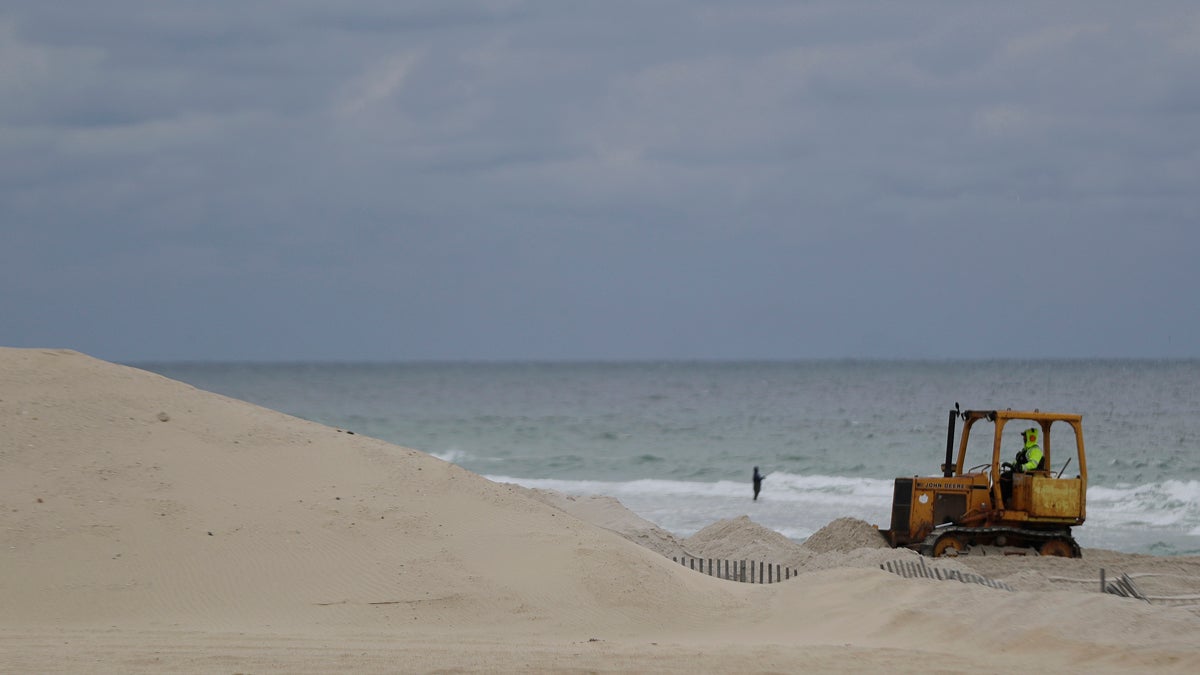U.S. researchers team up with Penn, other schools to study nature of dune protection

A worker pushes sand onto a protective sand dune in Seaside Heights
A new research partnership between federal government agencies and universities is part of an effort to better understand how sand dunes work and their role in shielding coastal communities from storms.
The U.S. Geological Survey has been studying sand dunes for years, but gaps remain in researchers’ knowledge.
“We have very little information about the actual processes that take place during the storm,” said John Haines, a Geological Survey coordinator for coastal and marine geology. “And the other challenge is that dunes are natural features, they have their own long-term processes of building, and we really don’t know a great deal about the timescales on which dunes will naturally recover when they’re eroded.”
To help answer those questions, the Geological Survey and other agencies have provided about $250,000 in grants to six university-led projects.
One of them, the University of Pennsylvania, received about $42,000.
Grad student Bianca Reo Charbonneau said there’s better understanding of how dunes react geomorphologically after a storm, but not ecologically. She will study how different plants growing in the sand affect dunes during storms.
“Coastal dunes are extremely stressful because of the salt, the wind that’s adding sand on top of these plants and taking it away and exposing their roots, low nutrients, low water,” she said. “Only a handful of plant species worldwide can actually survive on that first dune mound, which is the primary dune and the first line of defense during storms.”
She will compare four plant species, running trials in a wind tunnel, with wind speeds of zero to 30 mph. At that speed, sand is accumulating rather than being scoured out around the plants.
“All we need is to make sure that the plants are actually anchored properly like they would be in nature and then it’s a matter of simulating high winds associated with a storm,” she said.
The goal of the partnership is, ultimately, to provide coastal managers with guidance on how best to care for their coastlines.
WHYY is your source for fact-based, in-depth journalism and information. As a nonprofit organization, we rely on financial support from readers like you. Please give today.

